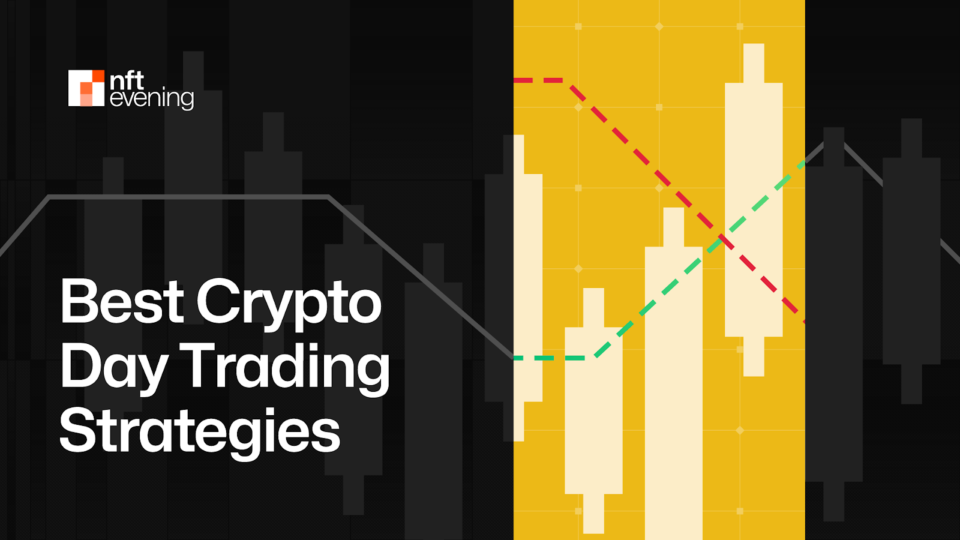Day trading in cryptocurrency markets involves buying and selling digital assets within a single trading day, and since crypto markets operate 24/7 (unlike traditional stock markets), it creates a fast-paced environment with higher volatility. This means that opportunities for quick profits can arise around the clock, but so can the risk of significant losses if trades go away.
In 2025, heightened mainstream attention is expected to attract new crypto investors seeking to exploit market inefficiencies. Many of these individuals are drawn by the allure of rapid gains, particularly in a market known for dramatic fluctuations, but successful day trading requires thorough research, an understanding of risk, and more.
This guide will outline essential crypto day trading strategies, how to pick the right assets, and the steps traders should take to navigate a market filled with both promise and pitfalls.
What is Crypto Day Trading?
Crypto day trading is the act of buying and selling cryptocurrency assets within a single trading session to profit from short-term price fluctuations. Rather than holding positions for days or weeks, day traders seek to execute trades within hours or even minutes, depending on market conditions.
This form of trading stands out for its rapid pace; participants look for smaller, more frequent gains, closing all positions before the day ends to avoid potential overnight risk. Market volatility is both a friend and foe to day traders. While dramatic swings can create lucrative entry points and exit points, they also expose traders to heightened market risk.
On top of that, crypto day trading differs from standard stock trading in that the crypto market never closes, meaning day traders can operate in a 24-hour environment. This persistent availability can offer more opportunities, yet it demands disciplined time management and the capacity to stay informed around the clock.
Because day trading involves numerous trades with relatively small profit margins per position, transaction costs can quickly add up. Traders must therefore select reliable crypto exchanges with acceptable fees.
Coupled with technical analysis, real-time data tracking, and a solid risk management framework, day trading can become a structured approach to profiting from market trends in a highly dynamic cryptocurrency market.
Best Crypto Day Trading Strategies
Day traders in crypto markets employ a variety of tactics to spot price differences and capitalize on short-term volatility. Let’s dig into some of the most common crypto day trading strategies that, when coupled with robust risk management, can boost the odds of success.
1. Momentum Trading
Momentum traders seek to profit from strong price movements driven by news events or large buying volume. They quickly identify assets showing substantial upward or downward movement and jump in with the belief that the trend will continue. News-based trading can also power momentum plays, as unexpected announcements often cause swift market shifts. Traders must be vigilant about exit points, however, since momentum can fade abruptly, leading to rapid reversals.
2. Range Trading
In a range-bound market, traders observe when asset prices bounce between upper and lower levels, known as resistance and support. The strategy involves buying near support and selling near resistance, repeating this process as long as the price remains within the established band. Because cryptocurrencies often exhibit cyclical moves in a tight price range, range trading can be effective if the trader monitors volume and confirms minimal breakouts.
3. Swing Trading
Although swing trading typically extends beyond a day, a condensed variation can still be used for day trading setups. Traders aim to ride a short wave of market trends, before closing positions. They rely on technical indicators like moving average convergence divergence (MACD) or the relative strength index (RSI) to gauge momentum shifts. Profits hinge on identifying micro-trends within a day, distinguishing this from the more patient, multi-day approach of standard swing traders.
4. Scalping
Scalpers target small profits from frequent trades, focusing on assets with robust trading volume and tight bid-ask spreads. Because scalping relies on numerous, tiny gains, controlling transaction costs is crucial. The objective is to enter and exit positions within minutes or seconds, exploiting slight price fluctuations. Scalping demands intense focus, constant chart monitoring, and fast reaction times, making it one of the more fast-paced and high-frequency trading methods.
5. Arbitrage
Arbitrage takes advantage of price differences across different exchanges. A trader may buy a token on one platform where it’s undervalued and sell it on another for a slightly higher price. While this method can be relatively low-risk if executed instantly, market conditions can shift unexpectedly, eroding potential profits. High transaction costs or delays in transferring assets may also limit its viability for day traders.
Some day traders lean on automated systems designed to scan the market for market inefficiencies.



